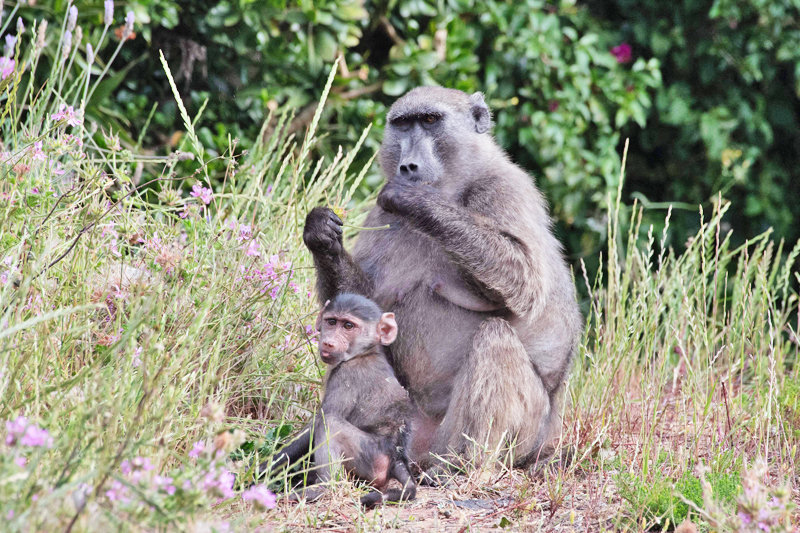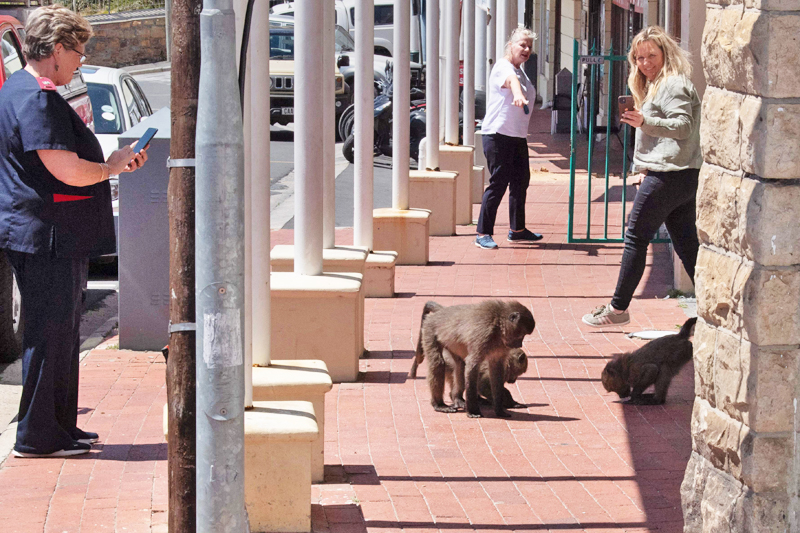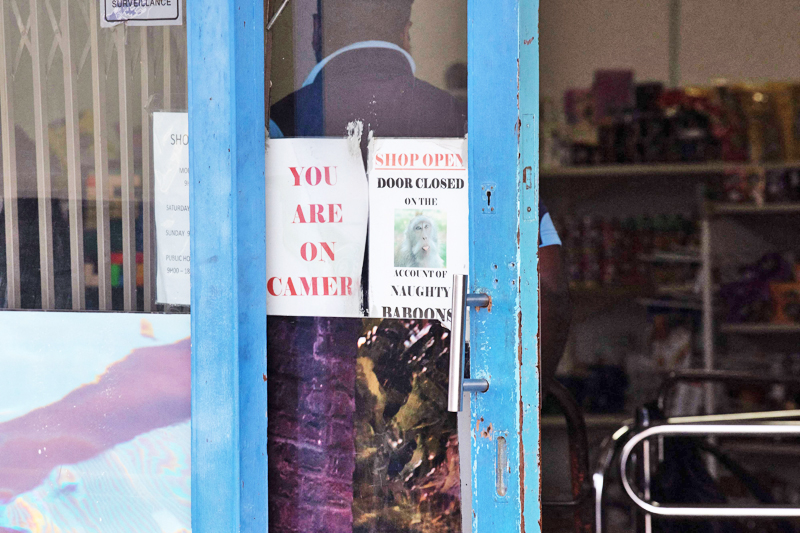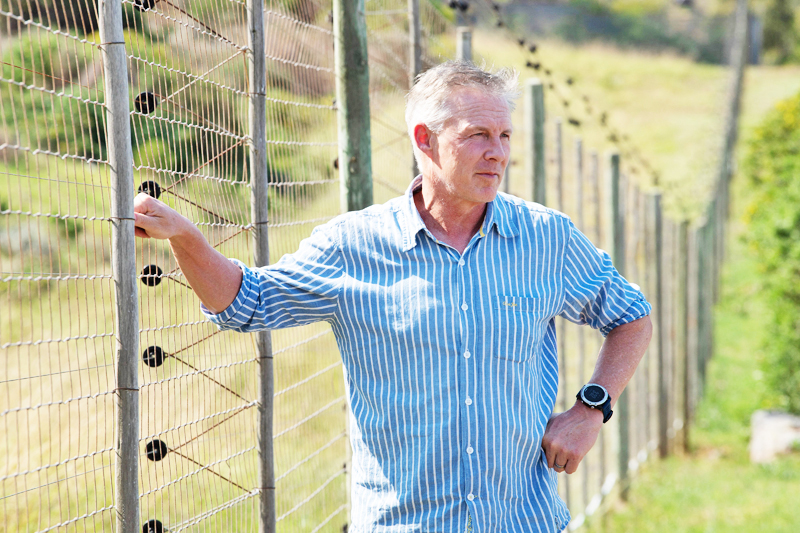CAPE TOWN – On a sunny afternoon in the seaside village of Simon’s Town, Cape Town, three young chacma baboons caused quite a stir as the animals climbed roofs, jumped between buildings and swung in storm drains.
Fascinated tourists stopped to photograph the group of baboons crossing the road.
However, the locals are less than thrilled, as this is an everyday sight in the charming village nestled between the Atlantic Ocean and Table Mountain National Park.
According to South Africa’s National Biodiversity Institute, around 500 chacma baboons – one of the largest monkey species that can weigh up to 40 kilograms – roam the peninsula south of Cape Town.
As human development increasingly enters their natural habitat at the foot of the mountain, these animals are increasingly entering luxury residential areas for
looking for food in the garden and garbage cans.





In fact, some managed to sneak into the house and cause great damage.
While many locals love these animals, giving them nicknames and following their daily adventures on social media, some are losing patience.
“The animal is getting too bold now. It’s tamer than it should be,” said Duncan Low, 60, an ice cream shop operator.
The intruder even started storming the kitchen and taking food from plates in the restaurant. “Baboons are now addicted to sugar and fast food,” added Low.
In 2021, the city had to end the history of an alpha male baboon who was famous for more than 40 times raiding garbage cans, yards, and porches in search of food, even entering houses even though there were occupants inside.
Tensions between humans and baboons are now at an all-time high, says ecologist Justin O’Riain, director of the Institute for Community and Wildlife in Africa at the University of Cape Town.
“The baboons that live on the border between the wild and the city are the most difficult animals to manage,” explained O’Riain.
“Baboons are strong, good at climbing, and learn from each other. There is no landscape it cannot conquer.”
As humans have developed in Cape Town, these baboons have been “pushed higher into the mountains” where food sources are harder to come by, O’Riain added. However, the beautiful gardens with fruit trees and the swimming pool in the residential area become an attraction that is difficult for them to ignore.
BABOON MANAGEMENT PROGRAM
The City of Cape Town, together with the national park authority, has been running a baboon management program for many years, involving a team of baboon monitors.
The program uses a non-lethal approach, including paint shots to keep baboon herds away or eliminate animals that are too problematic.
However, this technique often receives criticism. In May, the campaign group Baboon Matters took court action against the city and the park for failing to implement more appropriate control measures, such as baboon-proof fences and trash cans.
With limited funds, the authorities announced that the baboon management program will be stopped by the end of the year, while they study ‘more sustainable urban solutions’.
However, the program will continue until December, a busy month with tourists, albeit with fewer rangers.
“We’re going to lose our first line of defense,” O’Riain said, with more baboons now entering urban areas and putting their lives at risk.
Between July 2023 and June 2024, 33 baboons were reported dead, the highest number in 10 years.
Almost half of the deaths are caused by human factors, including air gun fire, collisions with vehicles, and dog attacks.
LONG TERM SOLUTIONS
Conservation activist Linda Silk, who heads the Cape Peninsula Public Conservation group, insists that living with baboons requires ‘human compliance’, starting with food waste management.
“We don’t have to compete with our natural resources: there is a way for us to manage our lifestyle so that the negative effects can be minimized,” he said.
For O’Riain, the only practical solution is to erect fences in certain areas using electric wire and underground netting to prevent baboons from burrowing in.
The fence prototype installed 11 years ago showed great success, with
almost no baboons enter the area.
“The baboons can forage right up to the edge of the fence without being disturbed,” O’Riain said.
“It’s a completely peaceful interaction, a win-win situation for humans and baboons.” – AFP

